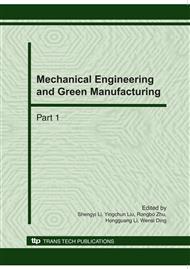p.1702
p.1708
p.1713
p.1718
p.1724
p.1730
p.1735
p.1739
p.1742
Fatigue Propagation Lifetime Prediction of Rotary Kiln Weld Shell
Abstract:
Rotary kin shell is welded by cylindrical steel plates. Crack propagation of weld toes near supporting rollers until final fracture is the main failure form. Based on fracture mechanics, an overall intensity factor with regard to circumferential stress, concentrated stress, residual stress, and temperature stress is used to asses the crack growth. Under complex overloading conditions, the major factor, namely, circumferential stress across shell, is calculated by using finite element (FE) code ANSYS. Concentrated stress, residual stress, and temperature stress play a major role in the fatigue growth behavior, thus their effects are considered in a theoretical analysis to be included in the overall intensity factor. A certain extent good lifetime results are obtained compared with practical observation. This paper presents a reasonable procedure to evaluate propagation lifetime of weld shell, and the results are quit significant for equipment daily maintenance of rotary kiln.
Info:
Periodical:
Pages:
1724-1729
Citation:
Online since:
October 2010
Price:
Сopyright:
© 2010 Trans Tech Publications Ltd. All Rights Reserved
Share:
Citation:


